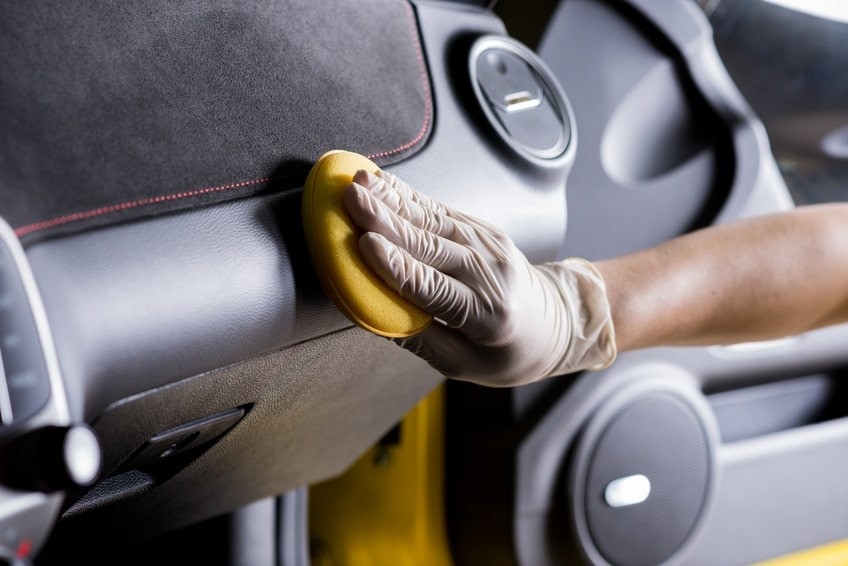It’s a common frustration for car owners: the interior of your vehicle, especially the door panels, can easily become marked and scratched. Whether it’s from daily use, kids, pets, or just general wear and tear, these scratches can detract from your car’s appearance and even reduce its resale value. No one wants to see their car’s cabin looking worn, but fortunately, repairing those scratches on your inside car door is a task you can handle yourself.
This guide provides you with practical, step-by-step instructions and expert tips on how to repair inside car door scratches using DIY methods. We’ll cover everything from identifying the type of scratch to the tools and techniques you’ll need to restore your car door’s interior to its former glory.
Understanding Types of Interior Car Door Scratches
Before you start repairing, it’s important to understand the different types of scratches you might encounter on your car door interior. Knowing the type of scratch will help you choose the right repair method. Interior car door scratches can vary in severity, and each type requires a slightly different approach. Let’s explore the common types of scratches you might find on your car door panels, their causes, and how to prevent them.
Scuff Marks
Common Causes:
Scuff marks are typically surface-level blemishes that occur when an object rubs against the plastic surfaces of your car door interior. They often appear as a result of dirt or dye transfer from items like shoes, clothing, or bags brushing against the door panels as people get in and out of the car.
How to Avoid/Fix:
The good news is that scuff marks are usually superficial and don’t cause lasting damage. Often, they can be easily wiped away with a quality interior car cleaner. To prevent scuffs, encourage passengers to be mindful when entering and exiting the vehicle. Regular cleaning of your car’s interior can also help prevent scuff marks from becoming ingrained.
Deep Scratches
Common Causes:
Deep scratches are more significant and penetrate beyond the surface layer of the plastic. These are frequently caused by sharp objects such as keys, water bottles, tools, or even seatbelt buckles scraping against the car door panels. Loading and unloading items without care can also lead to deep scratches.
How to Avoid/Fix:
Preventing deep scratches involves being cautious with sharp or abrasive items near your car door interiors. Ensure that loose items are properly secured and avoid placing objects directly against the plastic door panels. Repairing deep scratches usually requires a more involved process, as we’ll detail later in this guide.
Chips
Common Causes:
Chips are small areas of missing plastic, often resulting from impacts or general wear and tear. They can be more common in older vehicles where the plastic door panels may have become more brittle over time. Impact from stones or debris, though less common inside the car door, can also cause chips.
How to Avoid/Fix:
While daily wear and tear is a primary factor for chips, careful use can minimize their occurrence. Unfortunately, chips are among the more challenging types of damage to repair seamlessly. If pieces break off, try to preserve them, as it may be difficult to find matching replacements. Repairing chips often involves filling and retexturing the damaged area.
Cracks
Common Causes:
Cracks in interior car door panels are typically caused by prolonged exposure to direct sunlight, which can weaken and dry out the plastic. Extreme temperature fluctuations can also contribute to cracking. Areas around door handles or high-stress points are particularly susceptible.
How to Avoid/Fix:
To prevent cracks, try to park your car in shaded areas or use a windshield sun shield to minimize direct sunlight exposure to the interior. Regularly inspect your door panels, especially in stress-prone areas, for early signs of cracking. Repairing cracks might involve specialized plastic repair fillers and techniques to reinforce the panel and prevent further damage.
Step-by-Step Guide: How to Remove Scratches from Your Car Door Interior
When it comes to removing scratches from your car door interior, you have a couple of options. You can opt for a specialized scratch repair kit, which is convenient for minor scratches, or you can take a more hands-on approach using individual tools and materials, which is often more effective for deeper scratches. For more significant scratches, a DIY approach generally yields the best results. Let’s walk through the step-by-step process of repairing interior car door scratches yourself.
Essential Tools and Materials
To achieve a professional-looking finish when repairing scratches on your inside car door, gather the following tools and equipment:
- Heat Gun: Used to gently heat and reshape the plastic, helping to minimize scratches and restore texture.
- Interior Grain Pad Set: Essential for retexturing the plastic to match the original grain pattern of your car door panel. These often come in various textures.
- Superfine Grit Sandpaper: For smoothing out the repaired area and ensuring a seamless blend with the surrounding plastic.
- Plastic Scratch Polish Kit (Optional): For very light scratches and scuff marks, a polish kit can be sufficient.
- Interior Car Cleaner: A quality cleaner designed for car interiors is crucial for removing dirt and grime before and after the repair process.
Detailed Repair Process
Step 1: Thoroughly Clean the Scratched Area
Begin by cleaning the area around the scratch and the scratch itself with your interior plastic cleaner. Removing all dirt, dust, and debris is vital for a smooth repair. Contaminants can interfere with the repair process and potentially affect the final color and texture. Ensure the area is completely clean and dry before proceeding.
Step 2: Gently Apply Heat with a Heat Gun
Using a heat gun set to a medium or low setting, carefully apply heat to the scratched plastic. Keep the heat gun moving and avoid concentrating heat in one spot for too long to prevent warping or burning the plastic. The goal is to soften the plastic slightly, making it more pliable and allowing the scratch to become less pronounced. You’ll notice the plastic becoming slightly glossy as it warms up and the texture begins to soften.
Step 3: Utilize a Grain Pad to Retexture
Once the plastic is softened, immediately apply a grain pad to the affected area with light to medium pressure. Select a grain pad that closely matches the texture of your car door panel. Press the pad firmly but gently onto the heated plastic. This step helps to smooth out deeper scratches and, more importantly, re-imprint the texture onto the plastic surface, ensuring the repaired area blends seamlessly with the original finish.
Step 4: Allow Cooling and Harden
Let the heated and textured area cool down and harden completely. As the plastic cools, it will retain the new texture imparted by the grain pad. After cooling, assess the repaired area. While the texture should now be closer to the original, you may still need to refine the surface for an even smoother, more authentic look.
Step 5: Sand for a Smooth Finish
Using superfine grit sandpaper, lightly sand the repaired area. This step is crucial for removing any remaining imperfections and ensuring a smooth transition between the repaired section and the surrounding original plastic. Sand gently and evenly, checking frequently to avoid over-sanding.
Step 6: Final Cleaning
Clean the area one last time using your interior car cleaner, following the same method as in Step 1. This removes any sanding dust and reveals the final result of your repair. Allow the area to dry completely.
For very light scratches or scuff marks, a plastic scratch polish kit might be sufficient. These kits usually include a plastic cleaner, polishing compound, applicators, and microfiber cloths. The process is generally simpler, involving cleaning the area, applying the polish, and buffing it out. However, for anything beyond very minor surface marks, the heat gun and grain pad method offers a more effective and professional-looking repair.
Restoring Your Car Door Interior Trim
After repairing scratches, you might notice that the plastic trim on your car door looks a little faded or worn overall. To bring back its original luster and make the repair even less noticeable, consider using a plastic restorer.
Plastic restorer products, available as pads or sprays, are designed to rejuvenate and protect interior plastic trim. When applying a restorer, use gentle, circular motions and avoid aggressive scrubbing. Keep a restorer pad or spray in your car for easy touch-ups whenever your interior trim needs a refresh.
By following these steps, you can effectively repair scratches on your inside car door and restore the look of your car’s interior, maintaining its value and your pride in ownership.


